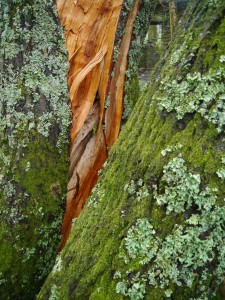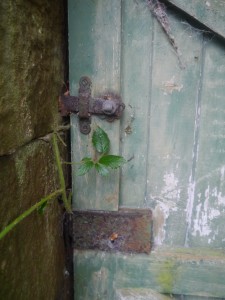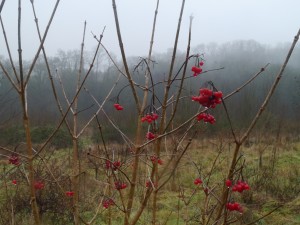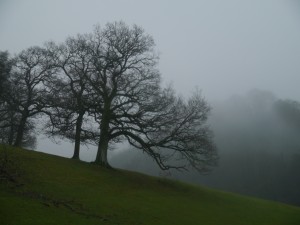Middle Banky Meadow, the Rookery, Old Camp, Parsons Batch, William White’s Wood, The Warrants, Kiln Meadow, Fir Tree Field…..
The Cefn Ila estate, just to the west of Usk, has been chopped about and continually changed hands since the early records in the 17thC. Nowadays it’s difficult to tell exactly, in this altered landscape, how today’s various land parcels match these fascinating 19thC recorded field names.
Monmouthshire was grey and damp when I decided to stop the car and search for Cefn Ila earlier this week. Llanbadoc, the nearest village and birthplace of Alfred Russell Wallace, was deserted. Some day I might return here to search for Kensington House, where Wallace spent his early childhood but not today. The light was fading fast and the fine rain kept on spilling stubbornly out of the laden sky.
The estate is a shadow of its former, picturesque glory. The Woodland Trust is the latest of a series of documented owners and tenants between the 17thC and 21stC when Cefn Ila seemed to pass like a hot potato from one family to another. In 2009 the Trust purchased the dilapidated Victorian Garden at the core of the historic estate, overlooking part of the old parkland. It’s difficult to imagine today the kind of lives and living that went into the making of Cefn Ila – such as the special Sunday Oriental teas that Edward John Trelawney used to put on for local intelligentsia in the mid 19th C, and his efforts to plant seedlings from Shelley’s grave in the ornamental garden. The house itself burnt down in 1972, 11 days after it was closed down as the maternity wing of Pontypool Hospital, having been used earlier, and since the Second World War as a convalescent home for mothers and children and for evacuees.
Forty years on and the garden and its over-mature specimen trees are a smush of dark greens. The orchard and walled garden are full of old sprawling apple and pear trees as well as the skeletal remains of garden structures. And beyond the historic garden core the Woodland Trust has planted 16,100 trees in the surrounding parkland as part of the Welsh Government’s PLANT scheme to commemorate every child born or adopted in Wales, and as a contribution to the Woodland Trust’s aim of joining up blocks of woodland to create substantial areas of native forest – a new landscape priority being superimposed on an 18th picturesque vogue.
A few ancient parkland trees stood majestically above the new planting and old lines of hedges flashed occasional bundles of yellow-green mistletoe amongst their dull February branches. The path wound squelchily along the forbidding fenceline of the Glascoed munitions factory, hidden under a smooth, grassy underground bunker, before dropping back towards the car park. The whole place was eerily silent that afternoon, the solitude broken only by the sharp stink of fox – over, and over again.




